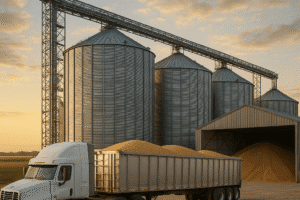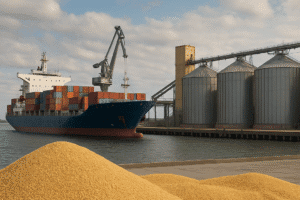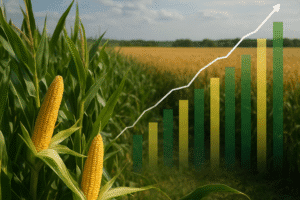The evolution of the grain sector in China has profound consequences for global markets, influencing supply chains, price trends, and trade policies. Over the past decades, the nation’s pursuit of self-sufficiency and its strategic import decisions have reshaped consumption patterns from Asia to the Americas. This article explores the multi-faceted role of China in the international grain arena, assessing its production advances, burgeoning demand, and impact on trade flows.
China’s Agricultural Transformation and Production
Modernization of Farming Practices
During the late 20th century, China launched sweeping reforms to elevate yields and mechanize agriculture. Investments in irrigation networks, high-yielding seed varieties, and precision machinery have turned the country into a production powerhouse. Provinces such as Heilongjiang and Shandong boast state-of-the-art grain belts where combine harvesters and GPS-guided tractors roam vast fields of wheat, rice, and corn. A combination of government subsidies, research from agricultural universities, and public-private partnerships has enabled rural communities to double or even triple per-hectare yields.
Environmental and Resource Constraints
Despite these advances, China’s agricultural sector grapples with pressing challenges. Water scarcity in the north and soil degradation threaten long-term viability. The government has responded with policies encouraging crop rotation, reduced fertilizer usage, and adoption of sustainability-oriented practices. Reforestation programs in the Loess Plateau and investments in water-saving technologies show that China recognizes the environmental footprint of intensive grain cultivation.
Consumption Patterns and Market Demand
With a population exceeding 1.4 billion, China accounts for roughly 20% of the world’s grain consumption. Rapid urbanization and rising incomes have shifted diets toward meat, dairy, and processed foods, escalating the demand for feed grains such as corn and soybean. Poultry, pork, and aquaculture industries collectively consume vast quantities of maize, while soybean imports primarily serve as an essential source of protein for livestock.
- Consumption growth has outpaced domestic output for certain feed grains, creating a reliance on foreign markets.
- Household preferences now include premium rice varieties and specialty grains, driving selective imports from Thailand, Vietnam, and Australia.
- Government food reserves and strategic grain banks cushion price shocks and ensure food security during supply disruptions.
Such dynamics place pressure on global inventories, especially when China releases or procures stocks to stabilize domestic prices. In years of drought or flooding, protective measures like export restrictions or temporary duty exemptions can reverberate through international markets.
China in Global Trade Dynamics
Major Import Flows
Over the past decade, China has emerged as the world’s largest importer of soybeans and a top buyer of corn and wheat. Its annual soybean purchases often exceed 100 million metric tons, drawing supplies mainly from Brazil and the United States. Meanwhile, corn imports have surged to fill the gap between imports and domestic feed production. Long-term procurement contracts and on-demand spot purchases underscore the government’s dual approach: securing stable volumes while retaining the flexibility to adjust sourcing strategies.
Export Strategies and Regional Partnerships
Though China remains a net importer overall, certain regions like Inner Mongolia and Xinjiang export sorghum, barley, and millet. Under the Belt and Road Initiative, infrastructure corridors connect Chinese grain hubs to Central Asia, the Middle East, and Europe. These corridors reduce transportation costs, minimize transit times, and facilitate trade agreements with partner countries. As a result, China not only sources grains but also serves as a conduit, forwarding surplus cereals and processed products to neighboring markets.
Market Influence and Price Volatility
China’s procurement policies exert powerful signaling effects on global commodity exchanges. Announcements regarding state reserve purchases or sales can trigger sudden price swings, especially when combined with weather events in key exporting nations. Traders monitor Chinese customs data, auction calendars, and policy directives to anticipate shifts in demand.
- Imposition or removal of tariffs on imported grains influences the cost structure for processors and feed mills worldwide.
- Currency fluctuations, notably the yuan’s strength, affect China’s buying power on the international stage.
- Speculative positions on futures markets often mirror expected Chinese purchases, amplifying price volatility.
Moreover, trade tensions or agricultural disputes may prompt China to pivot toward alternative suppliers, creating ripple effects across supplier nations. For instance, in response to geopolitical friction, Beijing has diversified its soybean purchases beyond the United States, spurring Brazilian farmers to expand acreage and negotiate new logistics routes.
Challenges and Future Prospects
Looking ahead, China faces the dual task of meeting a growing appetite for grain while preserving precious natural resources. Policy directives aim to maintain a 95% self-sufficiency threshold for staple grains like rice and wheat, even as feed grain reliance continues to climb. Technological breakthroughs—such as gene-edited crops, vertical farming, and digital agriculture platforms—promise further yield gains and resource efficiency.
Meanwhile, climate change poses unpredictable risks. Shifting precipitation patterns, rising temperatures, and extreme weather events threaten both harvests and infrastructure. Investments in climate-resilient varieties and predictive modeling will likely become central to Beijing’s strategy for safeguarding supply chains.
Global Collaboration and Governance
China’s membership in organizations like the Food and Agriculture Organization (FAO), the World Trade Organization (WTO), and regional forums shapes the governance of international grain flows. Participation in joint research initiatives, early warning systems, and emergency food reserves underlines its commitment to collective resilience. At the same time, bilateral agreements with major exporters ensure preferential access and stable pricing arrangements.
As China continues to integrate new technologies and refine its trade posture, its role as both a driver and stabilizer of the global grain market will only intensify. Understanding these dynamics is essential for policymakers, agribusinesses, and traders seeking to navigate an increasingly interconnected and complex agricultural landscape.













